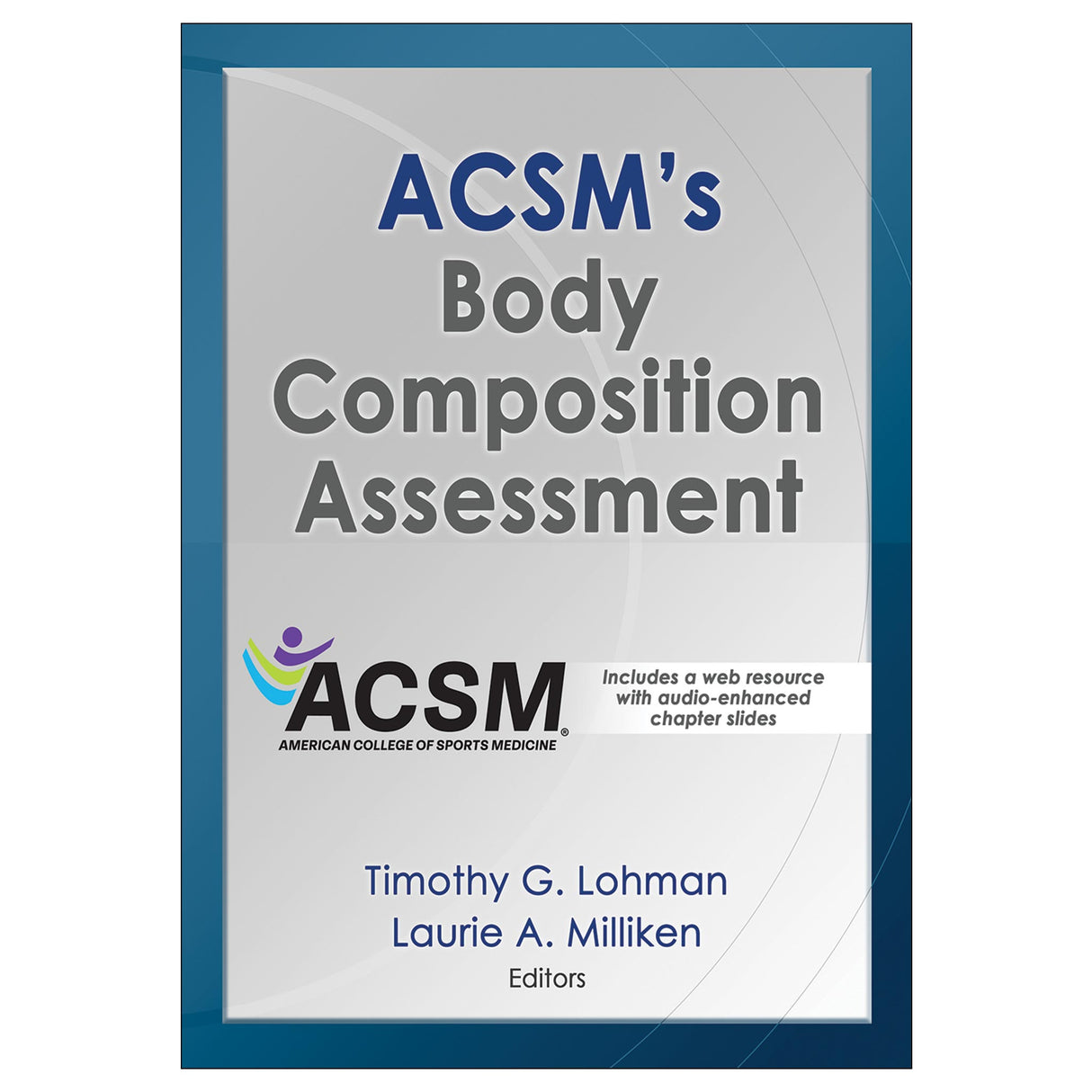ACSM's Body Composition Assessment epub With Web Resource
Author: Timothy Lohman, Laurie A. Milliken
$125.95 CAD
Access Duration: 10 Years
ACSM’s Body Composition Assessment delves into the methodology for a number of techniques, including DXA, BIA, ultrasound, underwater weighing, ADP, total body water, multicomponent models, anthropometry (including skinfolds and circumferences), and BMI. The text uncovers the sources of error inherent in each measurement technique, and it identifies populations to whom these techniques can be applied with accuracy. Researchers and clinicians alike will benefit from descriptions of methods for use in both laboratory and field settings, protocols for the standardization of each method, and advantages and limitations for each method.
The text thoroughly examines the health implications of body composition by looking at the relationships between chronic disease and total body fat, fat distribution, muscle mass, and bone density. It also facilitates the reader’s ability to assess changes in body composition over time and to understand special considerations in assessing body composition in athletes, children, older adults, the overweight population, and clinical populations.
ACSM’s Body Composition Assessment is supplemented with a web resource containing audio-narrated PowerPoint slides to support a deep understanding of the content. The slides walk readers through key points and assessments in each chapter, and select photos and tables from the book are included to facilitate learning and retention.
ACSM’s Body Composition Assessment will help alleviate errors in body composition assessment, making it an ideal reference for practicing fitness, health, and medical professionals; nutrition specialists; and exercise physiologists.
Audience
Applied reference book for fitness, health, and medical professionals; nutrition specialists; and exercise physiologists; text for higher education courses in body composition.Timothy G. Lohman, PhD; Laurie A. Milliken, PhD, FACSM; and Luis B. Sardinha, PhD
Errors in Body Composition Measurement and Assessment
Validation and Cross-Validation Studies
Body Composition Terms and Concepts
Summary
Chapter 2. Body Composition Models and Reference Methods
Jennifer W. Bea, PhD; Kirk Cureton, PhD, FACSM; Vinson Lee, MS; and Laurie A. Milliken, PhD, FACSM
Levels of Human Body Composition
Models of Human Body Composition
Total Body Potassium Counting and Neutron Activation Analysis
Imaging Methods
Summary
Chapter 3. Body Composition Laboratory Methods
Robert M. Blew, MS; Luis B. Sardinha, PhD; and Laurie A. Milliken, PhD, FACSM
Densitometry
Total Body Water
Total Body Potassium Counting
Dual-Energy X-Ray Absorptiometry
Ultrasound
Summary
Chapter 4. Body Composition Field Methods
Leslie Jerome Brandon, PhD, FACSM; Laurie A. Milliken, PhD, FACSM; Robert M. Blew, MS; and Timothy G. Lohman, PhD
Skinfolds
Circumferences
Bioelectric Impedance Analysis
Use of Weight and Height Indexes to Estimate Body Composition
Summary
Chapter 5. Assessing Measurement Error
Vinson Lee, MS; Leslie Jerome Brandon, PhD, FACSM; and Timothy G. Lohman, PhD
Types of Measurement Error
Intra- and Interobserver TEM/CV of Various Body Composition Measurement Methods
Reducing Error Associated With Field Methods
Summary
Chapter 6. Estimation of Minimum Weight
Timothy G. Lohman, PhD; and Kirk Cureton, PhD, FACSM
Estimating Minimum Weight in Wrestlers
Laboratory Methods for Estimating Minimum Weight
Field Methods for Estimating Minimum Weight
Summary
Chapter 7. Applying Body Composition Methods to Specific Populations
Jennifer W. Bea, PhD; Timothy G. Lohman, PhD; and Laurie A. Milliken, PhD, FACSM
Laboratory Methods
Field Methods
Summary
Chapter 8. Body Composition Applications
Vanessa Risoul-Salas, MSc, RD; Alba Reguant-Closa, MS, RD; Luis B. Sardinha, PhD; Margaret Harris, PhD; Timothy G. Lohman, PhD; Nuwanee Kirihennedige, MS, RD; and Nanna Lucia Meyer, PhD, FACSM
Nutritional Status
Competitive Sports and Exercise Training
Body Composition and Eating Disorders
Body Composition and Weight Loss
Body Composition, Chronic Disease, and Aging
Other Applications
Summary
—© Doody’s Review Service, 2020, Anthony Ewald, MD, Indiana University School of Medicine (5-star review)
Types of measurement errors
Using the dilution principle for total body water (TBW)
Image bank. Includes most of the figures, content photos, and tables from the text, sorted by chapter. These can be used to develop a customized presentation based on specific course requirements.
Web resource. Features audio-narrated PowerPoint slides to help the reader better comprehend the material. The slides walk readers through key points and assessments in each chapter, and select photos and tables from the book are included to facilitate learning and retention.





